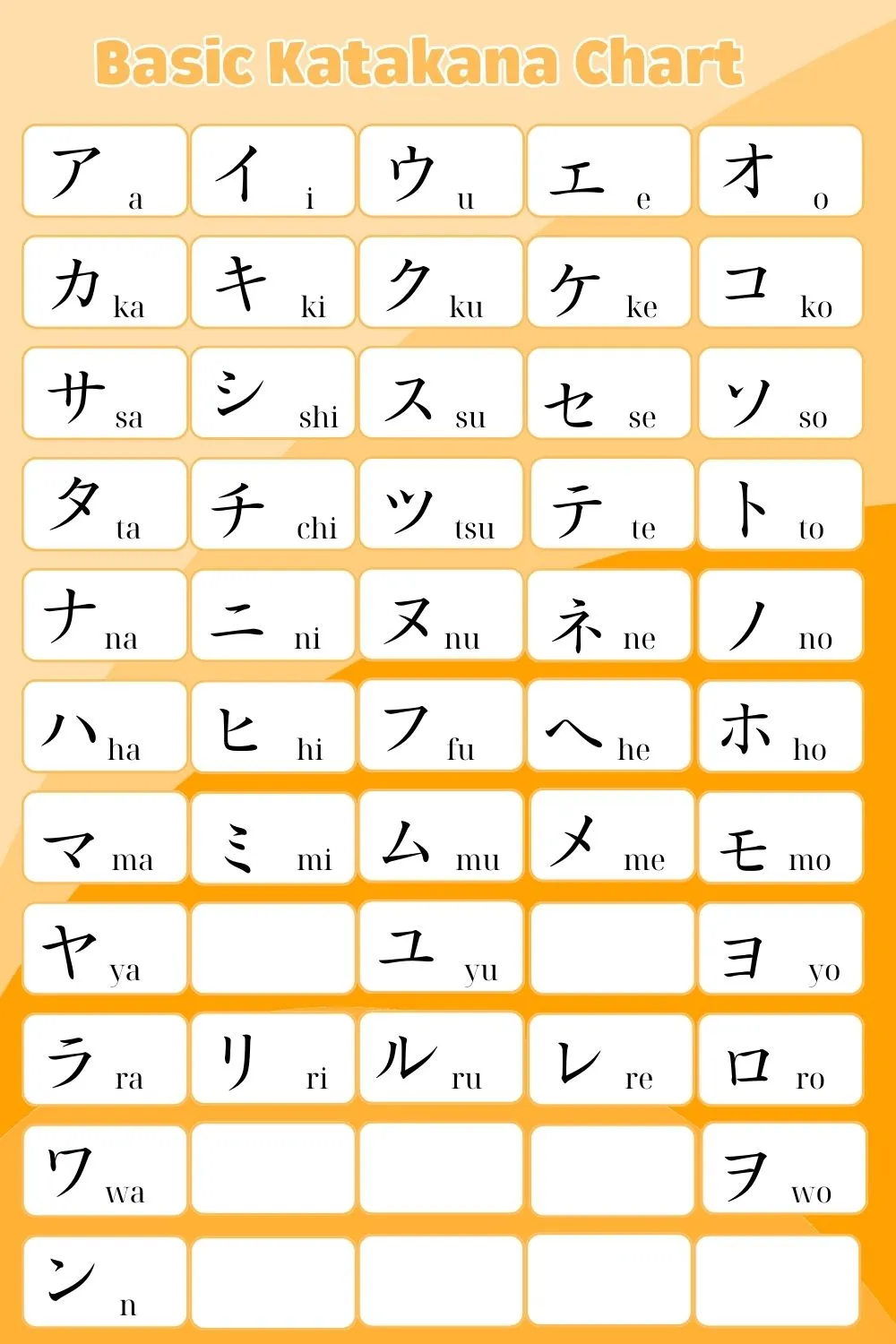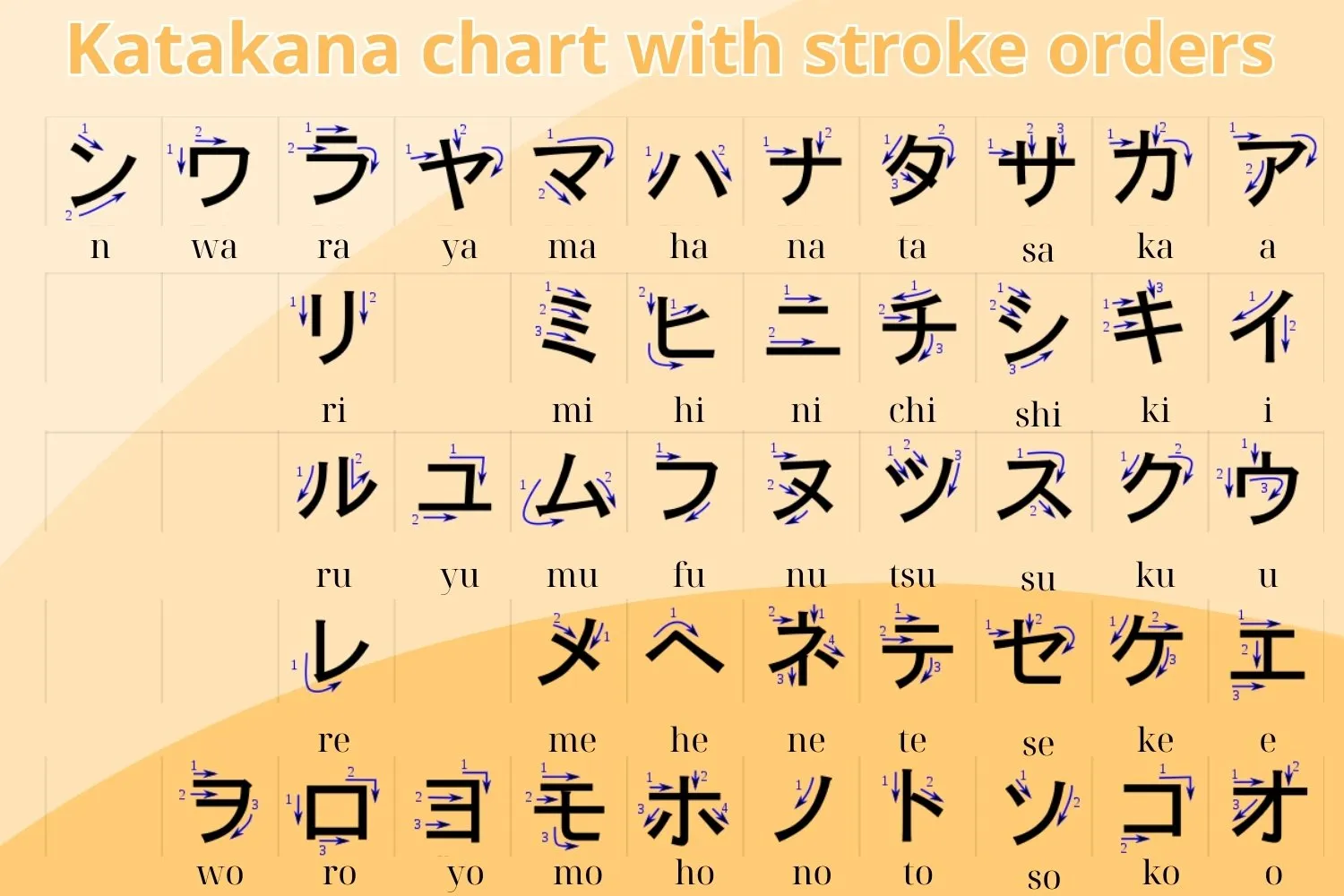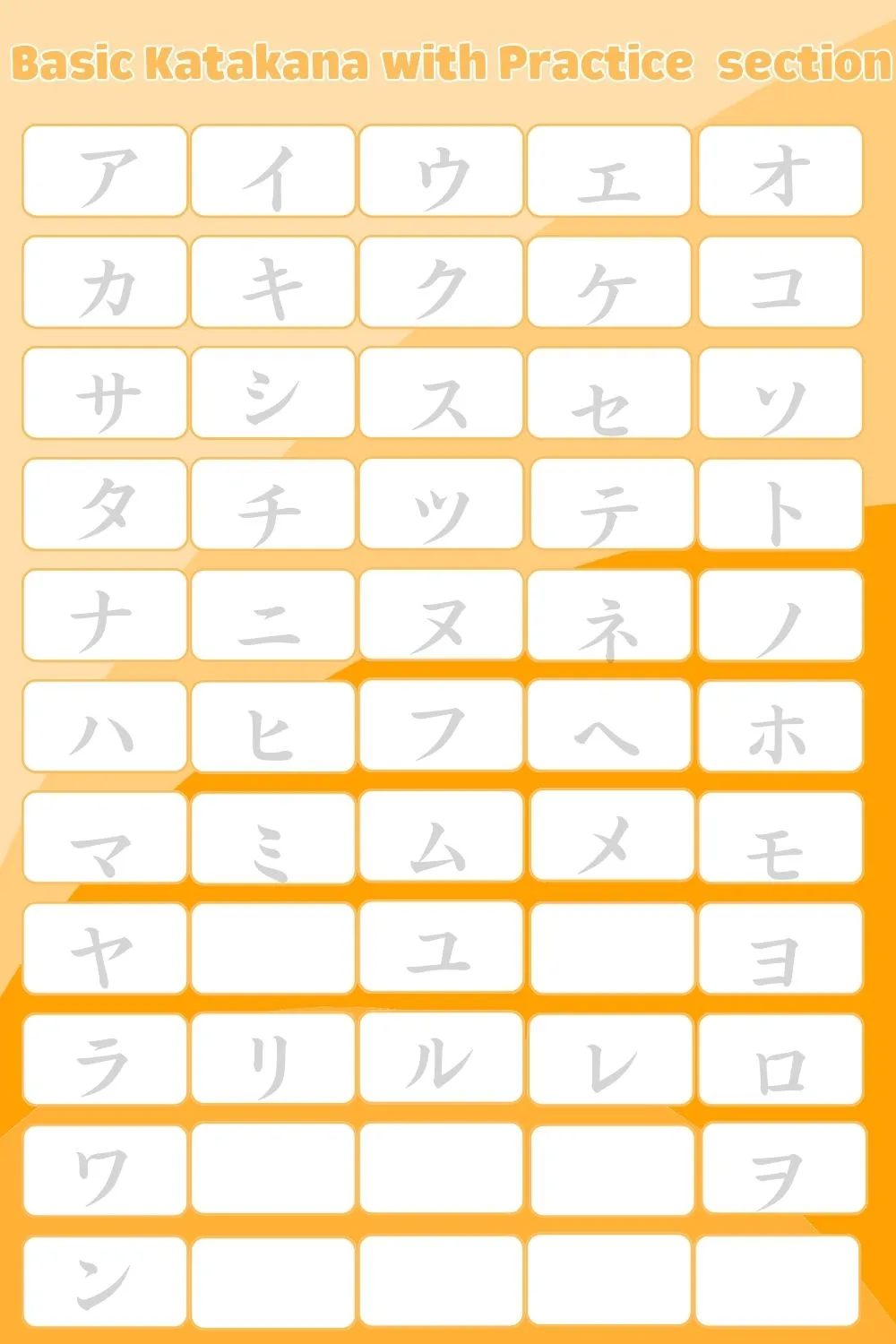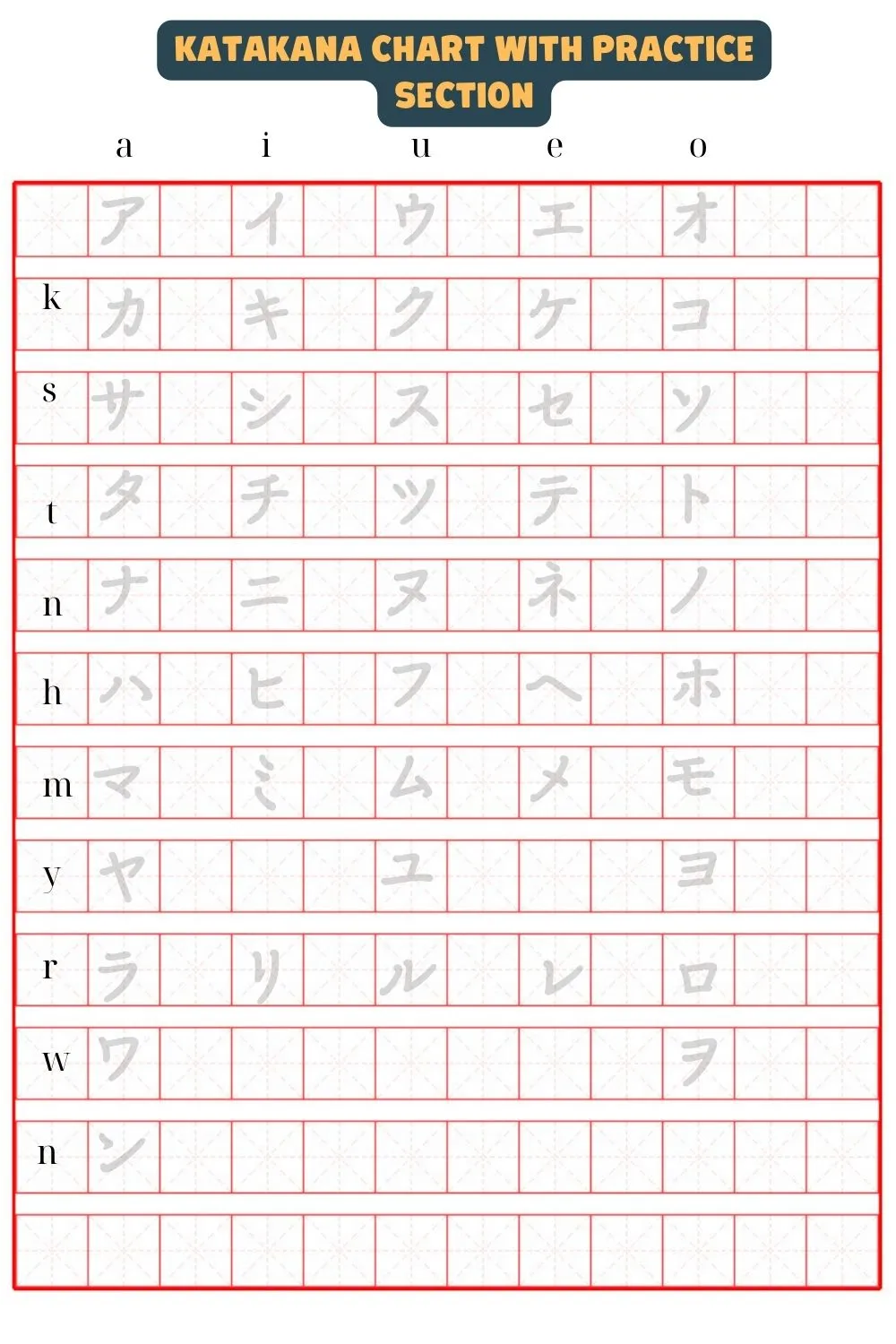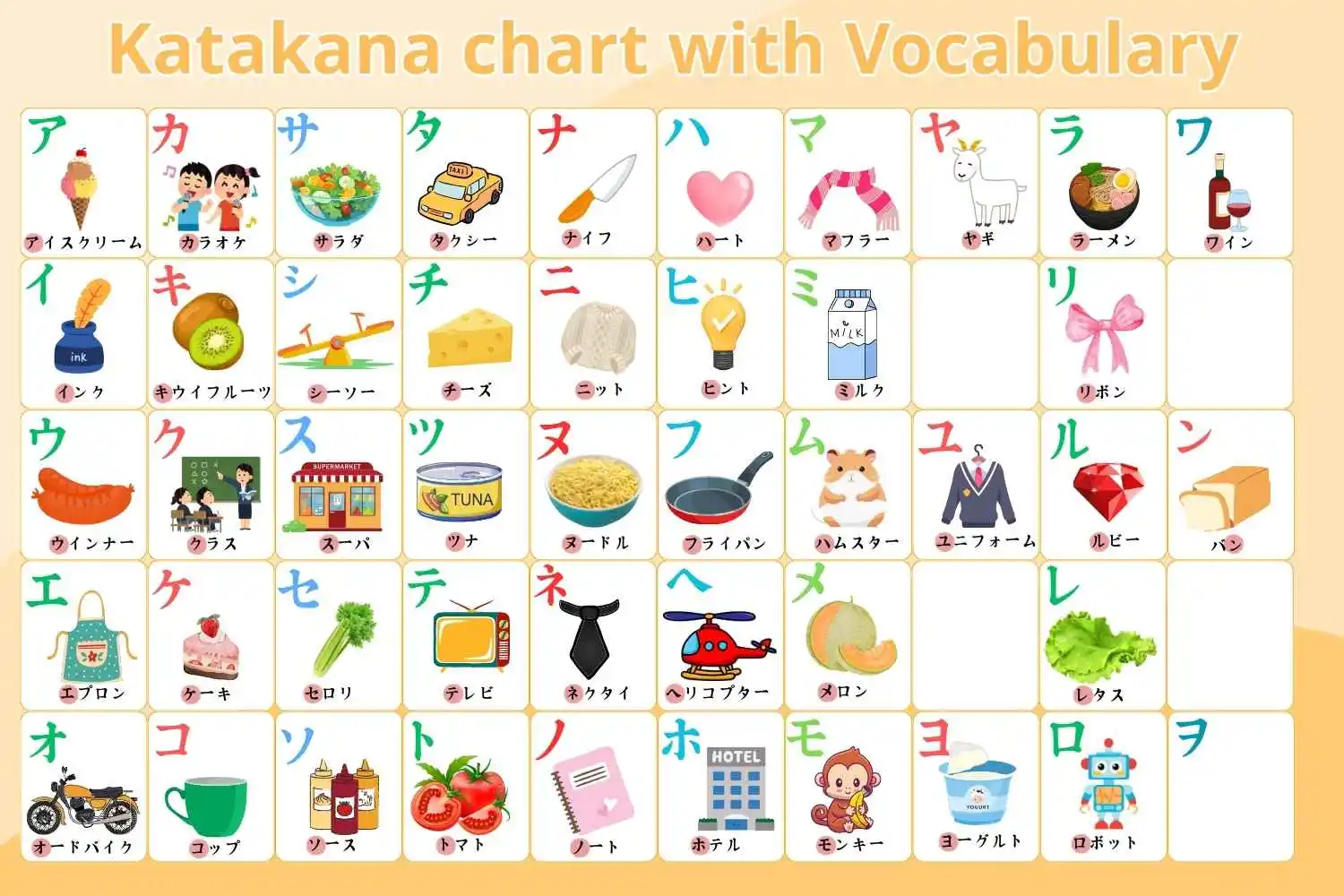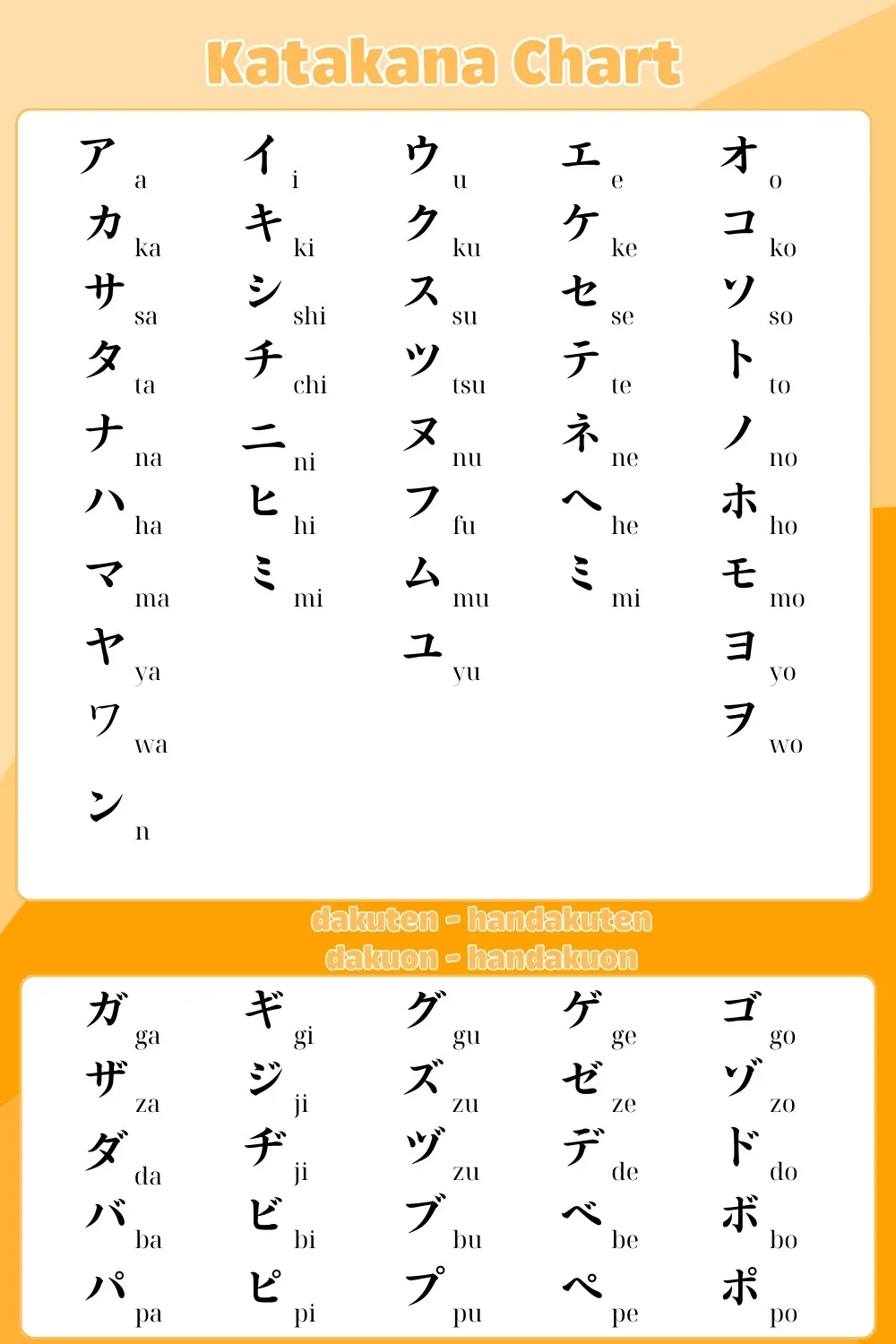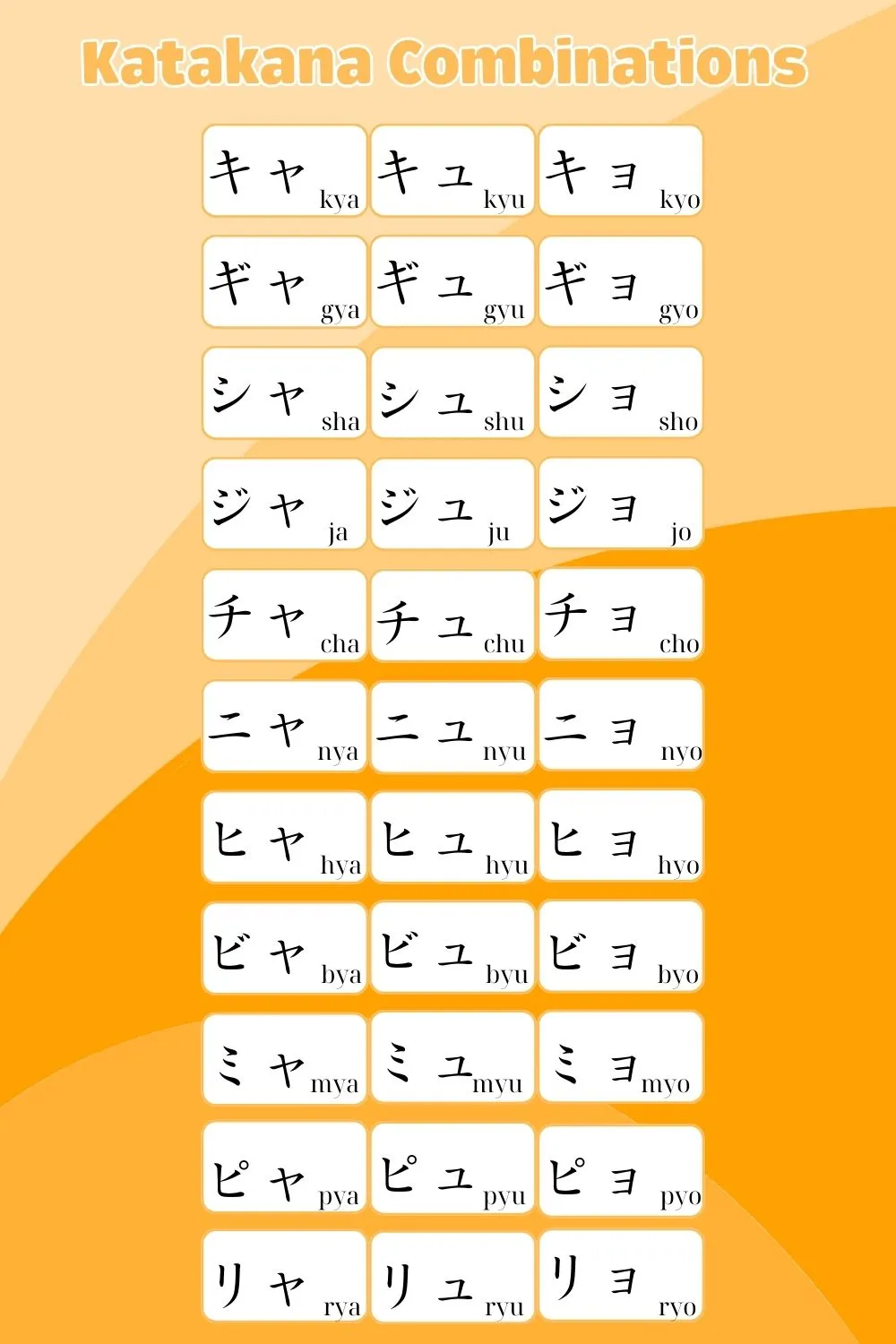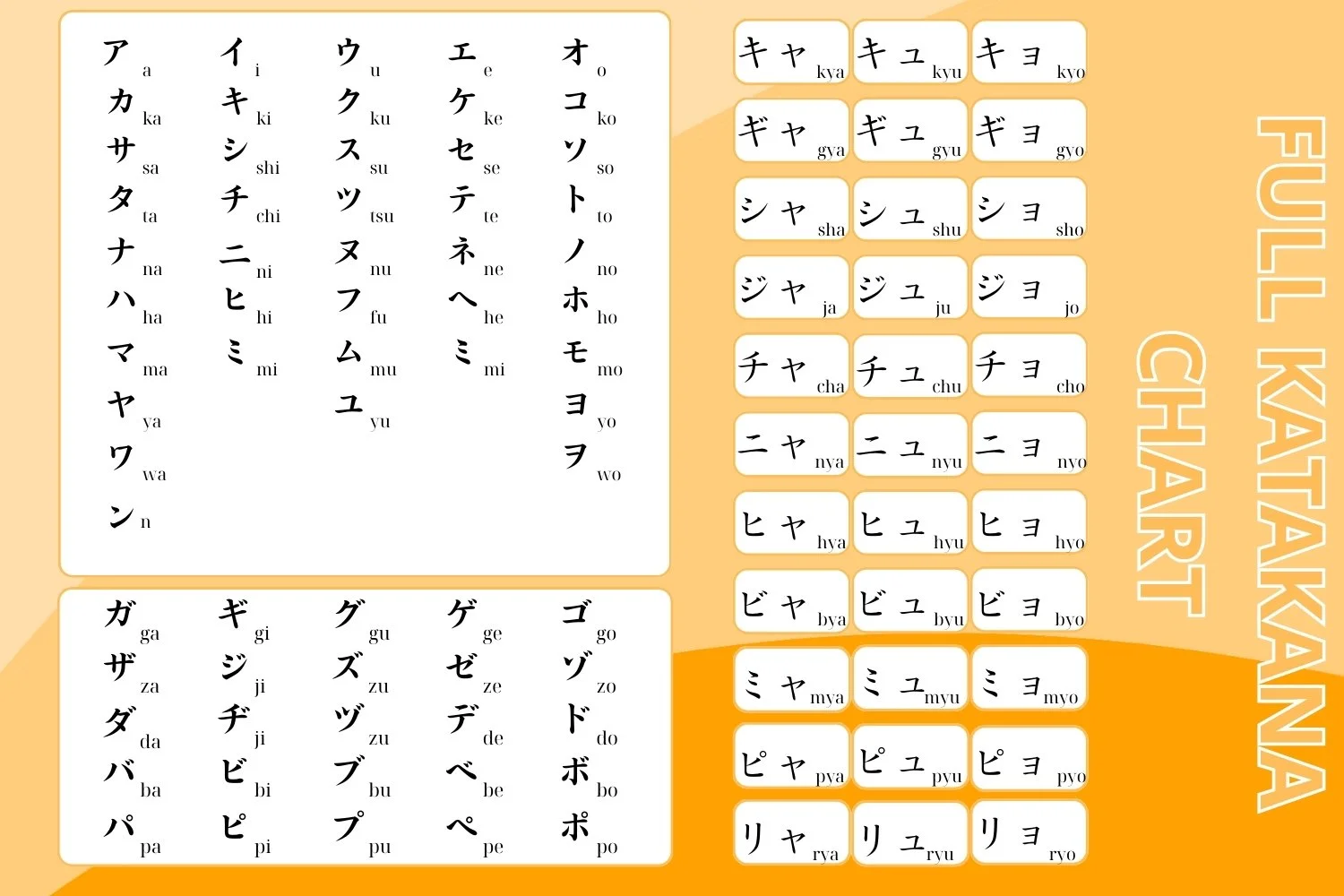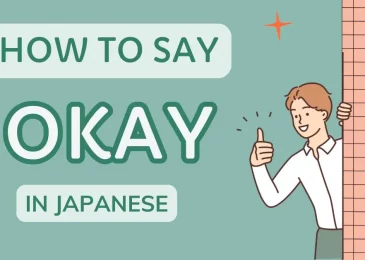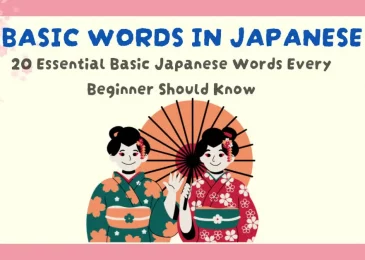- What is Katakana?
- Types of Katakana Alphabet
- Full Katakana Chart
- Top Tips for Memorizing Katakana
- Conclusion
What is Katakana?
Katakana chart is one of the three main writing systems in Japanese, along with Hiragana and Kanji. It consists of 46 basic characters, each representing a specific syllable. It is primarily used for foreign words (like “computer” or “coffee”), names of people and places, loanwords (words borrowed from other languages), and technical terms. It’s also used for onomatopoeia (words that imitate sounds) and for emphasis, similar to how italics are used in English. As you learn Japanese, recognizing Katakana is essential because it frequently appears in daily language, from product packaging to restaurant menus.
Types of Katakana Alphabet
Explore different Katakana alphabets, each designed to fit various learning styles and levels. These charts offer a clear and organized way to learn Katakana, helping learners at any stage remember characters and write them correctly.
Basic Katakana Chart
This chart shows all the main Katakana characters from ア (a) to ン (n). It’s perfect for beginners to start recognizing each character. Learning these basics helps build a solid foundation for reading and writing.
Katakana Chart with Stroke Orders
This chart includes the correct stroke order for each Katakana character. Following the stroke order helps you write neatly and accurately. It’s a great way to develop good handwriting habits.
Katakana chart with Practice section
This type of Katakana alphabet has space for you to practice writing each character. Writing by hand improves memory and makes it easier to remember. Practicing regularly can help you learn faster.
Katakana Alphabet with Japanese Vocabulary
This chart pairs each character with common Japanese words. It helps you see how Katakana is used in everyday vocabulary. Learning characters alongside words strengthens memory and understanding.
Katakana Alphabet with Dakuon, Dakuten, and Yoon
This chart includes additional sounds created by marks and combinations. It’s useful for reading more complex words and sounds. Advanced learners will find it helpful for reading foreign words in Japanese.
Full Katakana Chart
This full chart includes all the characters you need to know, giving you a comprehensive view of the Katakana writing system.
[Download your free Katakana chart]
Top Tips for Memorizing Katakana
Utilize Flashcards and Apps
Flashcards are an effective tool for memorizing characters. To save time, instead of creating them manually, you can use online language learning apps like MochiKana.
MochiKana is a highly effective app designed to help you master Katakana, and Hiragana. With interactive flashcards featuring images and sounds, and Hiragana and Katakana writing and listening practice, MochiKana provides a well-rounded learning experience to strengthen your Kana alphabet. Moreover, the app’s Golden Time feature, built on the Spaced Repetition principle, optimizes review timing for maximum retention, making it an ideal tool for anyone serious about mastering the Japanese alphabet.
Practice with Real-World Examples
Katakana is everywhere in Japan! From menus and signs to product packaging, you’ll find Katakana in all sorts of places. Make a habit of noticing it on product labels, signs, or in media. Seeing Katakana in real life helps build recognition, so you’ll feel more confident using it.
Incorporate Basic Vocabulary Practice with Katakana
Once you’re comfortable with individual characters, start building simple phrases using basic Katakana vocabulary, like “バスに乗る” (take the bus) or “アイスクリームを食べる” (eat ice cream). This step makes Katakana more practical and strengthens your grasp of how it’s used in daily language.
Conclusion
In conclusion, Katakana is a cornerstone of Japanese literacy and an essential skill for anyone learning the language. Mastering Katakana opens up a vast range of vocabulary, as it is commonly used for foreign words, names, and loanwords found in everyday life—from menus and advertisements to product packaging and pop culture. With the help of resources like a well-organized Katakana chart, you can simplify your learning process, gain confidence in reading and writing, and build a solid foundation in Japanese.

